How Inbound Marketers Can Use Google Featured Snippets
Written by
If you google “What are Google featured snippets” or “What is a Google snippet,” you’ll receive a definition of a featured snippet … within a featured snippet itself. So meta!
It’s also convenient, and that’s the point. Google featured snippets are blurbs of information related to a search query that Google pulls directly from a web page with pertinent information, presented to the searcher above the rest of the search results. A featured snippet is essentially what Google classifies as the best answer to the question, and they’re visible directly on the search results page meaning you don’t even have to click through to find your answer.
A snippet also includes a link to the page it was pulled from so the searcher can easily click through for full context and to learn more. Here’s an example:
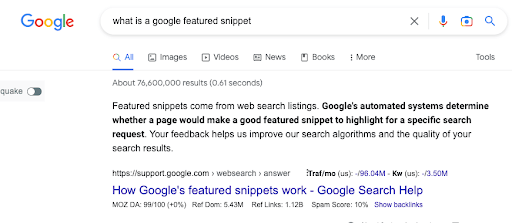
So, what are the benefits of Google featured snippets and how, as an inbound marketer, can you use them to your advantage? This is an exhaustive article, so buckle up! Use the links here to jump to a specific section:
- Featured Snippet Examples
- Benefits of Having Your Content Included in a Featured Snippet
- Content that Ranks & How to Optimize it for Featured Snippets
- Finding Featured Snippet Opportunities
- Build a Better Blog for Potential Featured Snippets
Featured Snippet Examples
Not all featured snippets look the same. You can find several different types depending on what you’re looking for and how information might best be presented. The five most common types of featured snippets are:
- Paragraph
- Numbered (or Step-Based)
- Bulleted
- Table
- YouTube/Video Content
Here are some examples.
Paragraph
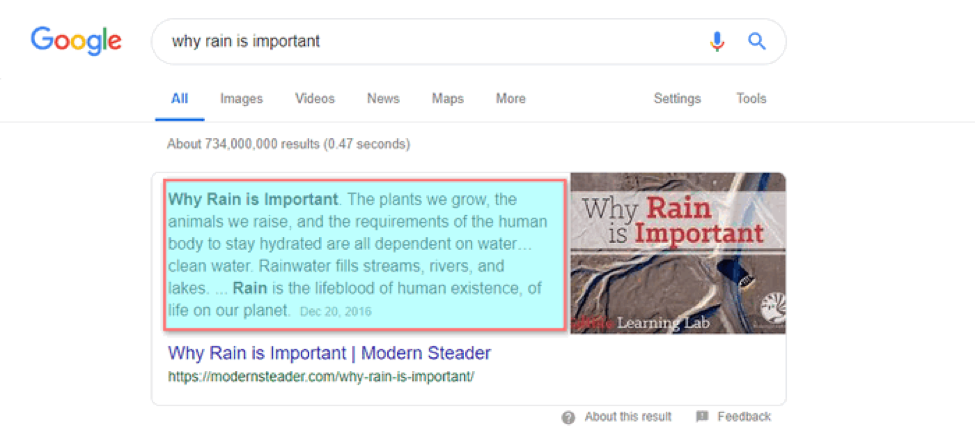
Numbered (or Step-Based)
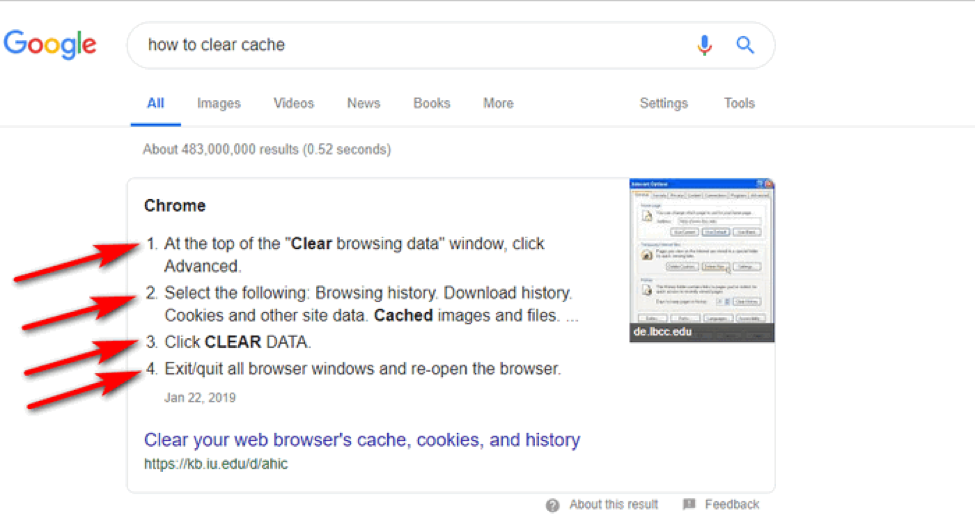
Bulleted
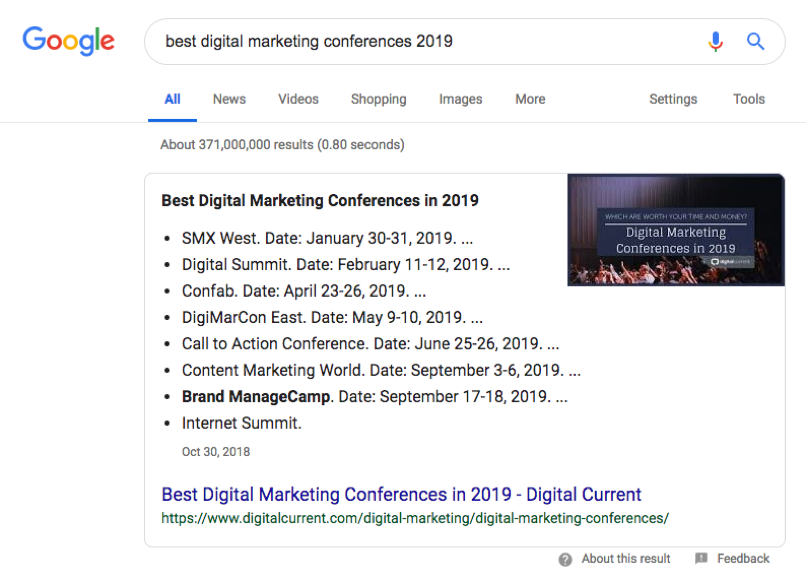
Table
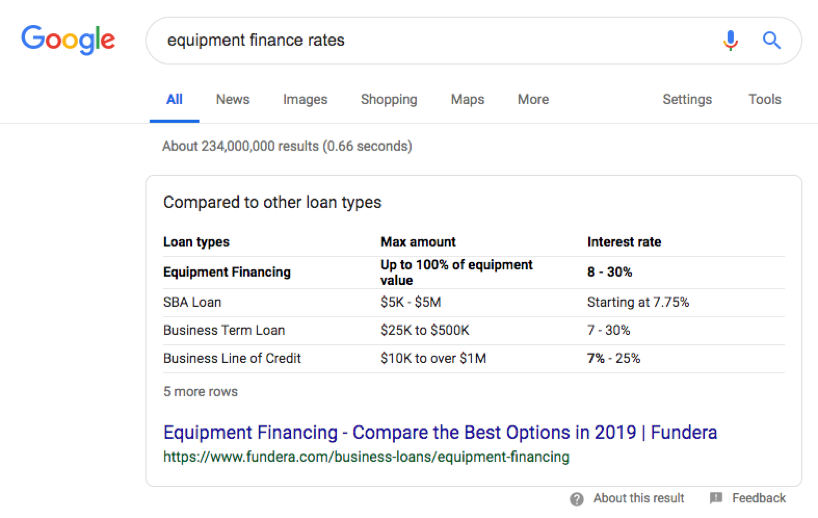
YouTube/Video Content
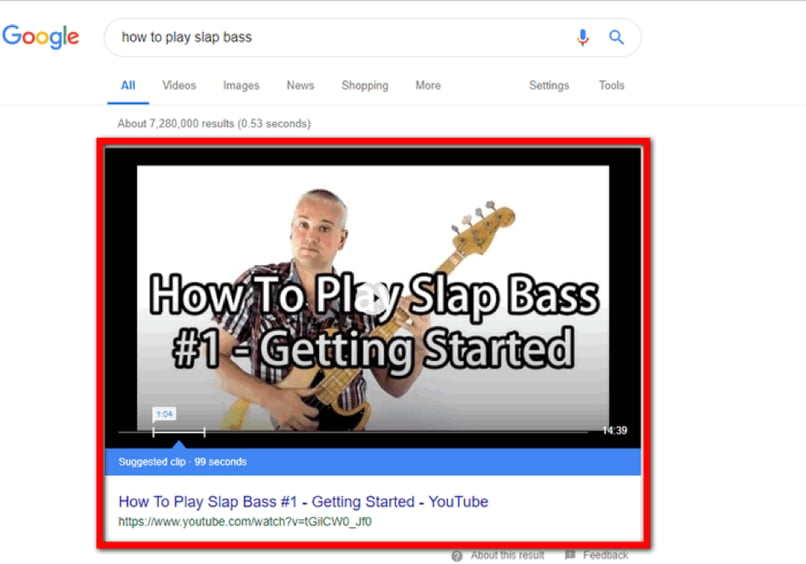
Instant Answers and Rich Snippets
To further clarify, there are a couple of different search results that look like featured snippets but don’t technically qualify.
The first is an instant answer, sometimes called a quick answer. That’s an informative presentation on a results page for a search query that doesn’t include a link to the URL where information was gathered. Instead, you’ll see the information presented ahead of any URLs as if the information were coming directly from Google. Here’s an example:
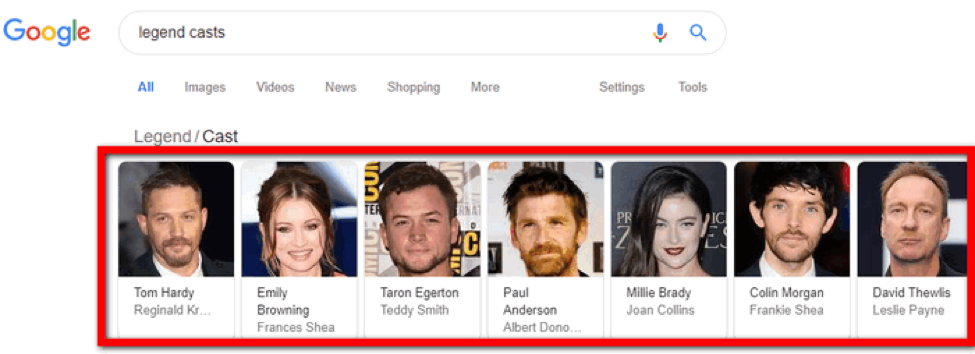
Another search result variation is what’s called a rich snippet. According to Backlinko, rich snippets are “normal Google search results with additional data displayed. This extra data is usually pulled from Structured Data found in a page’s HTML. Common Rich Snippet types include reviews, recipes and events.”
For instance, there could be a star rating if the URL contains reviews, or a recipe if that’s what’s included on the page. Here’s an example featuring an Events rich snippet:
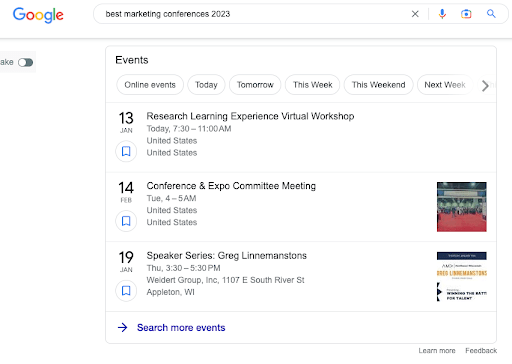
Benefits of Having Your Content Included in a Featured Snippet
Two major benefits exist if your content is part of a featured snippet.
1. High ranking on page one of a Google SERP
2. Brand awareness and click-throughs
How high will a snippet rank on page one of those search results? Typically higher than the number one organic position! That’s the whole idea; a Google featured snippet stands above the typical results and provides the answer before anyone needs to click. This is known as a zero-click search result (because you can get your answer without clicking through) in “position zero” at the top of the page.
It’s worth noting that the featured snippet and the first-position search result that appears next on the page can be from the same site depending on the query, but that’s not always the case.
Besides showing up above everything in the results listings, the traffic boost a site gets as a result of being featured can be drastic. When it comes to brand awareness and click-through rate (CTR), you may or may not see a lot of clicks from that featured snippet, but you’ll be building awareness and authority — a critical component of SEO — and continuing to rank highly in search results.
Content that Ranks & How to Optimize it for Featured Snippets
Website pages, landing pages, blogs — those can all have content that ranks for featured snippets, as long as they’re structured in a way that tells Google this is a top source for the query at hand.
There’s no one magic way to tell Google that you want a page to be eligible for a featured snippet, and Google is mum about any specific formula they might have. But there are ways you can create content to make it stand out as a viable featured snippet option.
1. Review Your Keywords
Review your keywords and analyze if there are any primary keywords driving traffic to your site that can be used to answer a user’s question. You can also use a tool like Semrush to conduct a competitor analysis and see what words they’re ranking for … or even what snippets they may be getting (more on that in a minute).
2. Format Your Content to be Snippet Friendly
Structuring content properly and making sure it actually answers any questions it asks are crucial.
- Be prompt and don’t meander in your paragraphs
- Use headings in appropriate order (H1, H2, H3, etc.)
- Put your keywords in those headings (organically and without keyword stuffing)
- If a list makes sense, format it as a list.
The main formatting element to keep in mind is to structure it as if you were answering this question to a person face-to-face. Keep it simple, and Google will take it from there.
3. Keep Your Content Fresh
A living, breathing website is one that stays current and continues to publish and update content to remain relevant and reliable. This kind of practice helps to build on that authority and gives you better chances of Google noticing you’re the right fit for a snippet.
4. Measure Engagement
If users aren’t engaging with your new or refreshed content, it means it probably isn’t as relevant as you thought. Keep massaging the content until you see that engagement metric tick higher.
Read More: The Top 8 Marketing SEO Tools for a Stronger Inbound Content Strategy
Finding Featured Snippet Opportunities
Since featured snippets are included on the first page of Google, it won’t be hard to guess that they belong to the websites that rank in the top 10 SERP positions for the keyword that snippet addresses. There are many cases though when you rank highly for a specific term, but you don’t own the snippet. How do you turn the table and get those snippets for yourself?
You’ll need to identify the featured snippets that exist first using a tool like Ahrefs or Semrush. In Semrush, for example, there are a few ways you can conduct a competitive analysis to find ranked keywords and whether or not those keywords and competitors are garnering featured snippets. The Organic Research report under the Competitive Research heading is one example.
You can also use the Site Explorer tool from Ahrefs.
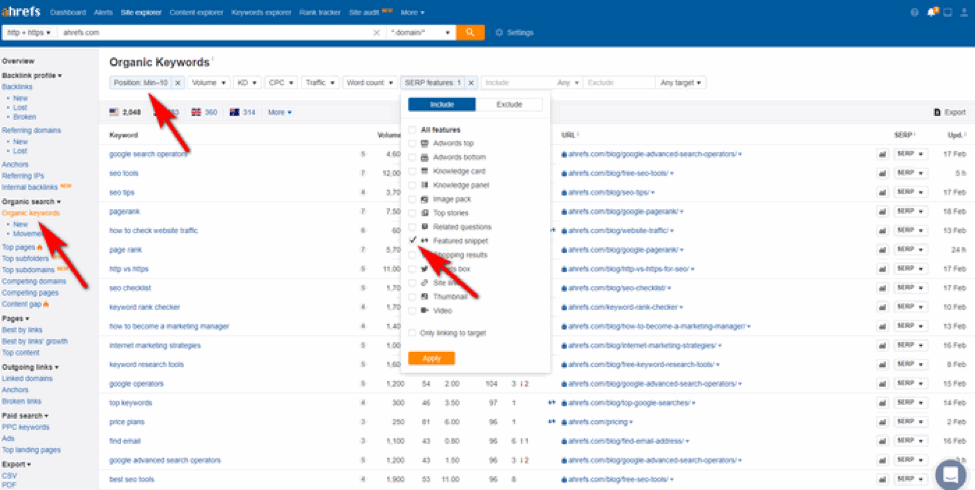
This report provides you with the list of keywords (queries) for which your website ranks in the top 10 (according to the “position” filter) along with featured snippets, where they’re applicable. But there are some snippets that don’t belong to you — they belong to your competitors.
You can review the snippets that are owned by your website by applying the filter “Only linking to target.”
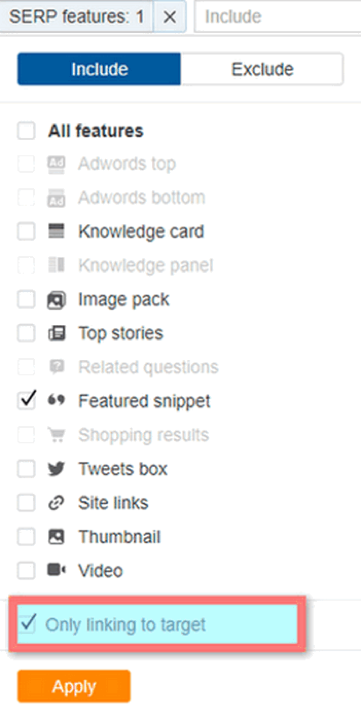
But the challenge is getting the list of featured snippets your competitors have. To identify these, you can export all the results to a CSV file and review competitors’ snippets manually. Take the following steps:
- Import the CSV file to this spreadsheet (copy it) and choose “replace data at the selected cell.”
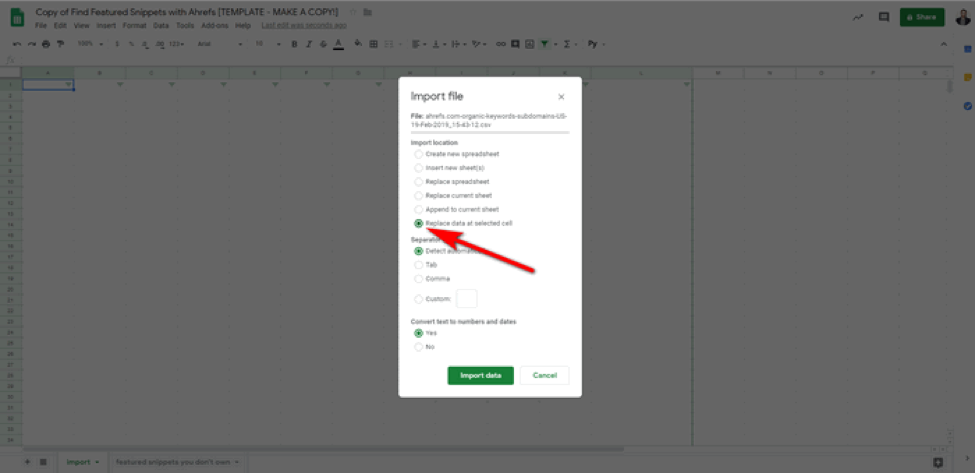
- Go to the tab “featured snippets you don’t own.”
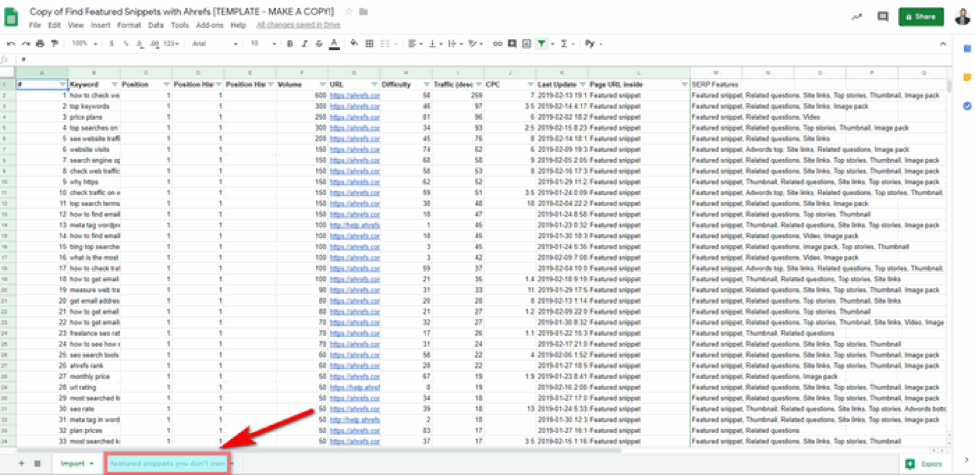
- Use Google to see who owns the snippets that don’t belong to you.
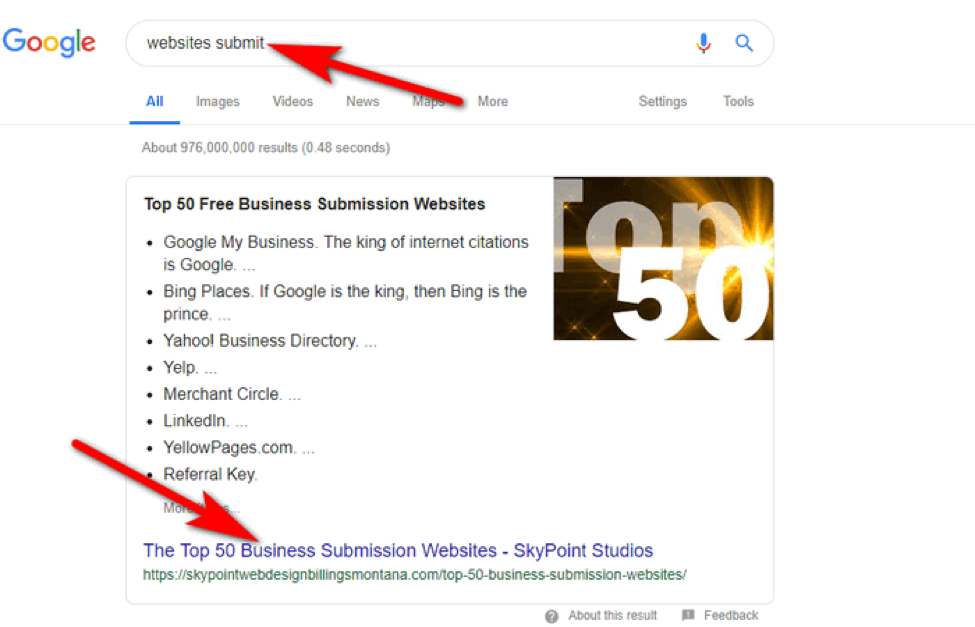
So, when competitors’ snippets are identified, what next? You must find the reasons these snippets aren’t yours. Potential causes may be:
- Poor content format
- Not fully covering the information related to the query
- The HTML markup or SEO has a poor structure
It takes an exhaustive SEO and website user experience strategy to optimize the content to be suitable for featured snippets.
Build a Better Blog for Potential Featured Snippets
Phew! This may all seem like a lot to take in, but ultimately, if you want featured snippets, it comes down to having relevant content in a way that’s built for prompt, informative answers. A great way to attract such attention (not to mention leads!) is by publishing high-quality blogs and other content that gives searchers what they need.
We’ve got you! Our free resource, The B2B Business Builder’s Guide to Blogging, is full of experience-based advice and strategies that cover how to manage a blog team, maximizing SEO, writing click-worthy headlines, and so much more. Click below to access your free copy today!
Subscribe To Our Blog
Information. Insights. Ideas. Get notified every time a new Weidert Group blog article is published – subscribe now!
You May Also Like...

Artificial Intelligence
AI, Analytics & Content: Right-Now Strategies with Andy Crestodina

Artificial Intelligence
Revenue-Driving B2B Content Marketing Strategy with Andy Crestodina

Artificial Intelligence
AI Agents Are Here—How Smart Businesses Are Using Them Now
Accelerate Your Growth with
Weidert Group
If you’re ready to explore a partnership, request a personalized consultation with our team.

